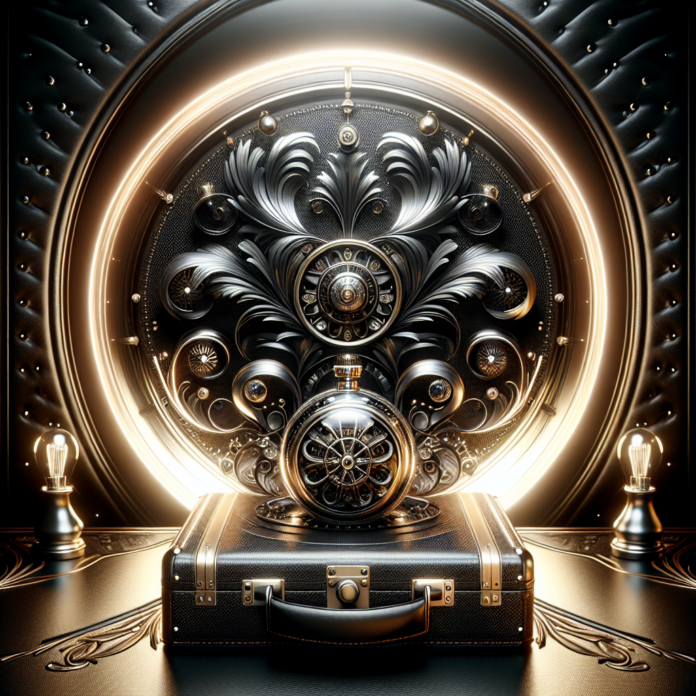
Exploring the Materials and Artisanship That Make Accessories Timeless
The allure of luxury leather goods lies not just in their aesthetic appeal but in the profound narrative of quality, tradition, and meticulous craftsmanship that each piece carries. From the supple touch of finely tanned leather to the precise stitching and innovative designs, luxury leather accessories are a testament to artisanal excellence and cultural heritage.
- Exquisite Materials: The Foundation of Luxury
- Masterful Craftsmanship: The Art of Leatherworking
- Iconic Brands and Their Signature Styles
- Cultural Impact: Leather Goods in Fashion and Society
- Sustainability and Innovation in Leather Luxury
- Preserving the Legacy: The Future of Luxury Leather Goods
Exquisite Materials: The Foundation of Luxury
The journey of creating a luxury leather item begins with the selection of materials. The quality of leather, often sourced from exclusive tanneries, plays a pivotal role in determining the product’s luxury status. Renowned for their meticulous processes, tanneries like Horween in the USA and Conceria Walpier in Italy are celebrated for producing some of the finest leathers, including Shell Cordovan and Buttero, respectively.
Each type of leather, from full-grain to patent, offers distinct qualities and aesthetics. Full-grain leather, for instance, is highly sought after for its durability and ability to develop a rich patina over time, adding character to the product. Exotic leathers like crocodile, ostrich, and snakeskin, add an extra layer of exclusivity and texture, making each piece uniquely luxurious.
Masterful Craftsmanship: The Art of Leatherworking
The essence of luxury leather goods lies in their craftsmanship. Artisans, often with decades of experience, employ traditional techniques that have been passed down through generations. Hand-stitching, edge painting, and embossing are just a few of the meticulous steps involved in the creation of a luxury leather accessory.
In workshops from Florence to Tokyo, craftsmen spend hours, sometimes days, creating a single item. Brands like Hermès are renowned for their commitment to craftsmanship, with their famous Birkin bags being handcrafted by a single artisan from start to finish, a process that underscores the personal touch and skill invested in each piece.
Iconic Brands and Their Signature Styles
Luxury leather goods are often associated with iconic brands that have built reputations on the quality and design of their products. Louis Vuitton, for example, is synonymous with its monogrammed leather, a symbol of luxury and status worldwide. Similarly, Gucci’s interlocking Gs and Prada’s Saffiano leather have become hallmarks of their brand identity, each representing a blend of tradition and modern fashion sensibility.
These brands not only contribute to setting high standards in the industry but also help in preserving artisanal leatherworking skills by investing in artisan training and maintaining high production standards.
Cultural Impact: Leather Goods in Fashion and Society
Luxury leather goods have long held a significant place in fashion and society, symbolizing status, sophistication, and an appreciation for refined quality. They reflect not only personal style but also societal values and cultural trends. For instance, the rise of minimalist luxury in recent years has seen brands like Celine gaining popularity for their clean, understated leather designs.
Moreover, luxury leather items are often at the center of cultural dialogues about sustainability and ethical fashion, pushing the industry towards more responsible production practices.
Sustainability and Innovation in Leather Luxury
As the luxury industry faces increasing scrutiny over environmental and ethical practices, many brands are innovating to incorporate sustainability into their production processes. This includes using vegetable-tanned leathers, which are less harmful to the environment, and adopting circular fashion principles to ensure the longevity and recyclability of leather goods.
Technological advancements have also led to the creation of lab-grown leather and vegan alternatives that mimic the properties of real leather, offering sustainability-conscious consumers luxury options without compromise.
Preserving the Legacy: The Future of Luxury Leather Goods
The world of luxury leather goods is at a crossroads between tradition and innovation. As brands navigate these challenges, the focus remains on maintaining the high standards of quality and craftsmanship that define the sector. By embracing sustainable practices and innovative technologies, the luxury leather industry can continue to offer timeless elegance and superior quality, while contributing positively to society and the environment.
For further exploration into the art of leather craftsmanship, consider visiting the Leather and Hide Council of America’s website here.
